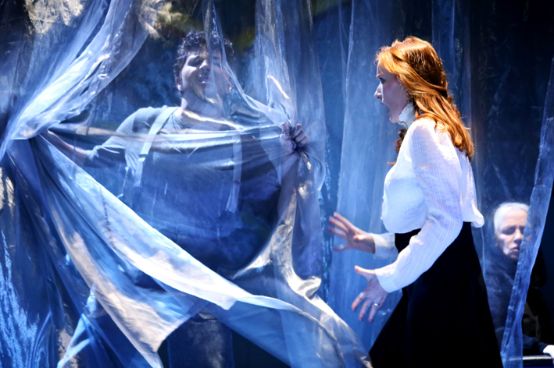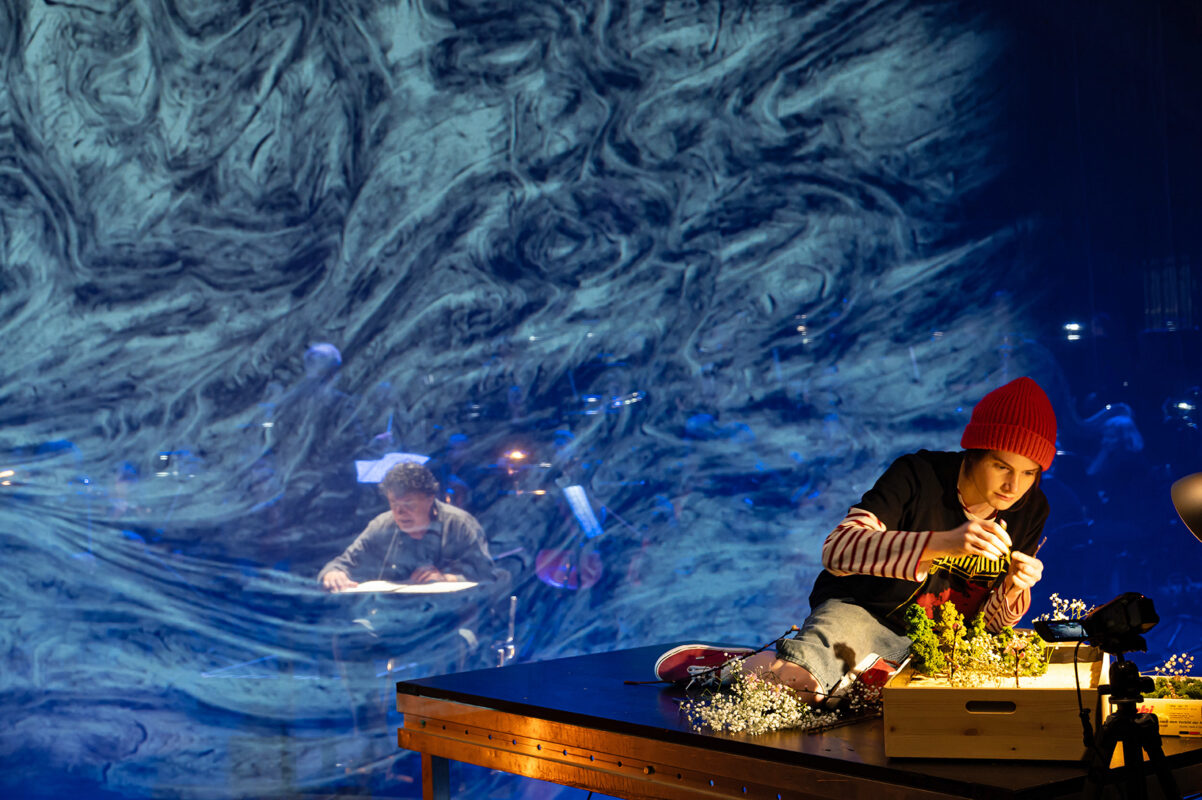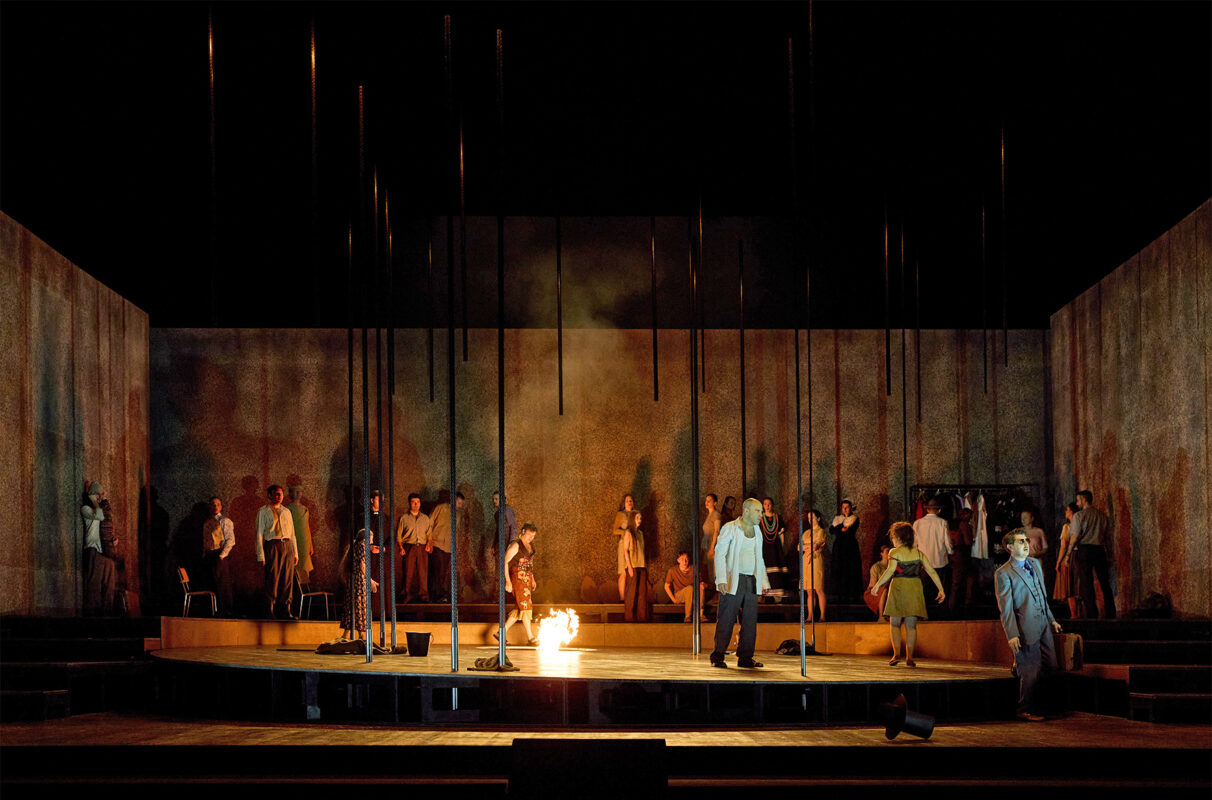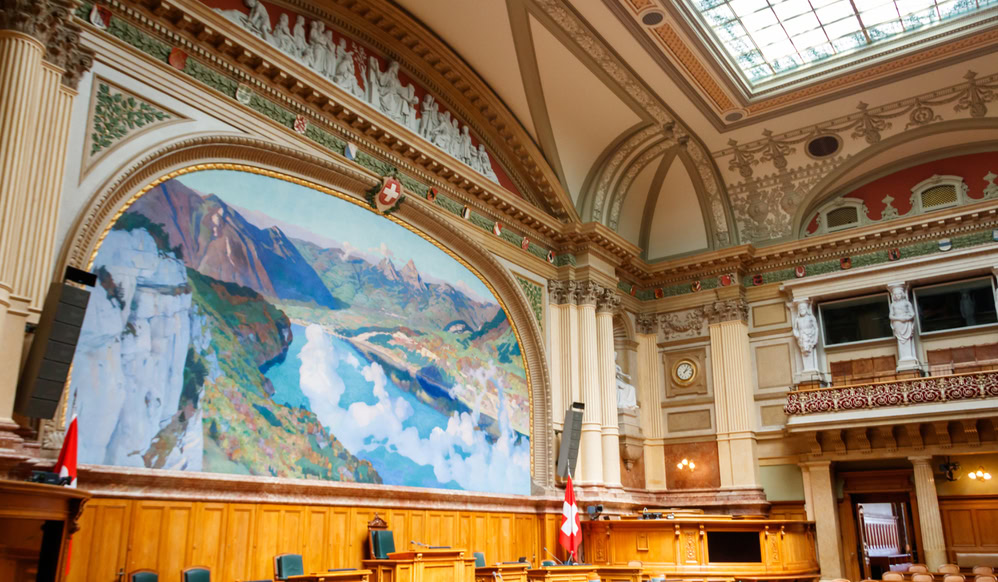Little drop height
Jost Meier's new opera "Marie and Robert" can be seen in Biel and Solothurn. Hansjörg Schneider wrote the libretto based on the play by Aargau dialect poet Paul Haller.

Marie actually loves Robert, but marries the rich Theophil. The latter owns the house where Mrs. Schödler, Robert's mother, lives. He wants to increase her interest rate. Marie steals money from her husband to compensate Mrs. Schödler for the additional costs. Theophil discovers Marie and Robert having sex. Robert hits Theophil in an argument. He falls down unhappily and dies. The tale of love and betrayal could have taken place anywhere. The Aargau dialect poet Paul Haller (1882-1920) set it in the Swiss Mittelland in 1917.
Haller's play forms the basis for Jost Meier's opera "Marie und Robert"; Hansjörg Schneider wrote the High German libretto. It has now been premiered at the Stadttheater Biel. In the original text, Robert's incendiary speeches anticipate the national strike of 1918, which Meier and Schneider have upgraded to an independent motif in their work for choral scenes, without any apparent inner connection between the dynamics of the triangular relationship and the politics of the time. As if that were not enough, the already overloaded story is charged with even more meaning in the production: Moreover, the Aare is meant to serve as a metaphor for Marie and Robert's emotional lives.
The story does not serve as more than a homecoming novel, if only because its trigger, Marie's calculating marriage for rather banal, selfish reasons, does not allow for any greatness of failure. There is no compelling conflict, no height of fall, no oversized fate. The cute Aare is no Nile, a village king (Boris Petronje as Theophil) is no emperor, the rather petty bourgeois Marie (Leila Pfister) and Robert (Geani Brad) are not Tristan and Isolde. But even in such an everyday story, which is primarily suitable for village gossip, one could draw credible psychological depths. Meier's expressive, colorful music, into which he has hidden many a sound symbolism, could provide the material for this. However, it seems too big for the small space of Biel's Stadttheater. The sound mixtures of an orchestra, in which the harp is positioned on the first floor of the auditorium and the percussion in a side chamber, fall apart (at least at the reviewer's first floor seat). In the Biel premiere, the solid ensemble also struggles with a direction (Reto Nickler) that is not really internalized and sometimes teeters on the edge of unintentional comedy, for example when Robert suddenly starts peeling potatoes in the middle of his excitement (as a skip?), Marie hops around desperately in front of a window or Mrs Schödler (Franziska Hirzel) suddenly falls off her wheelchair. The blackened faces of the chorus and a transparent curtain that divides the stage and - for whatever reason - is alternately opened and closed by the protagonists are also not really comprehensible in terms of their dramaturgical logic.
It becomes clear that the consistent use of the grotesque could have brought out more profound interpretations of the plot. Or a reduction to a finely chiseled chamber play would have allowed for more credible psychograms. As it is, however, almost everything in the production remains undecided: The overloaded plot, the music, the directorial concept and thus also the questions of what it is really trying to tell us and what the actuality of the story is. The Biel-Solothurn Symphony Orchestra and its conductor Kaspar Zehnder, the choir and its director Valentin Vassilev cannot really be blamed for this. Like all the other performers, they do their job with decency. Perhaps the thread to the aesthetic, which ultimately draws on motifs from the early 20th century in its music, plot and symbolism, has been broken today.
Further performances








